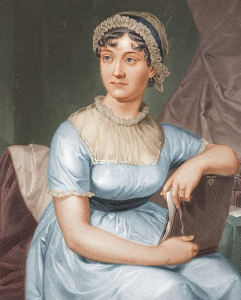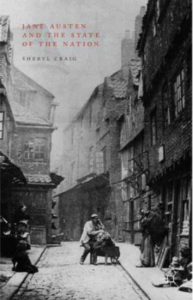 This year marks the 200th anniversary of Jane Austen, one of Britain’s most well-known literary figures. She died on 18 July 1817, and this year celebrates a variety of different events to commemorate her life (see Jane Austen 200). To tie in with this, we looked at the resources available on the Bibliography of British and Irish History, and have selected some material which highlights the less-explored themes surrounding Austen’s life and her work.
This year marks the 200th anniversary of Jane Austen, one of Britain’s most well-known literary figures. She died on 18 July 1817, and this year celebrates a variety of different events to commemorate her life (see Jane Austen 200). To tie in with this, we looked at the resources available on the Bibliography of British and Irish History, and have selected some material which highlights the less-explored themes surrounding Austen’s life and her work.
A newly published book titled Jane Austen and the Reformation: Remembering the sacred landscape by Roger E. Moore explores the medieval religious houses that feature in Austen’s novels, noting the nostalgia that people in the Georgian era felt for the England that existed before the Reformation. He pays particular attention to the first-hand experience that Austen had with pre-Reformation buildings, such as being taught at the gatehouse at Reading Abbey and visiting relatives at Stoneleigh Abbey.

Abbey gateway Reading, by Paul Sandby, 1808 (image: Wikipedia)
Jane Austen, Dominic Serres, Princess Olive of Cumberland, Graf von Moltke: Unexpected encounters of an interesting kind is an article by Chris Birch in Geneologists’ Magazine (32:4), which charts a surprising family history that traces the author’s heritage from sugar plantations in St Kitts back to James Austen, Jane’s eldest brother. It is thought that the character General Tilney in Northanger Abbey was based on James’ father-in-law, General Edward Mathew.
‘The “Fanny Price Wars”: Jane Austen’s Enlightenment feminist and Mary Wollstonecraft’ is an article in Women’s Studies. Fanny Price from Mansfield Park is generally regarded as Austen’s most unlikeable heroine, and this article discusses how Mary Wollstonecraft’s A Vindication of the Rights of Women may have shaped the development of Austen’s character.
 Jane Austen and the state of the nation by Sheryl Craig takes a political view of Austen’s novels, discussing in each chapter a specific novel and relating it to the political and economic climate, such as Poor Law reform, the Speenhamland System and the Restriction Act of 1797. The monograph concludes that Austen maintained a liberal tory outlook throughout her writing life.
Jane Austen and the state of the nation by Sheryl Craig takes a political view of Austen’s novels, discussing in each chapter a specific novel and relating it to the political and economic climate, such as Poor Law reform, the Speenhamland System and the Restriction Act of 1797. The monograph concludes that Austen maintained a liberal tory outlook throughout her writing life.
Other resources encompassing wider themes in Austen’s work include ‘Jane Austen’s Plots of Prevention’ in Reading for health : Medical narratives and the nineteenth-century novel by Erika Wright and ‘Novel Appetites: Jane Austen and the “Nothing” of Food’ in The food plot in the nineteenth-century British novel by Michael Parrish Lee.
The Bibliography currently has 219 listed resources for Jane Austen, visit the BBIH to explore more:
(Click on image to enlarge)

